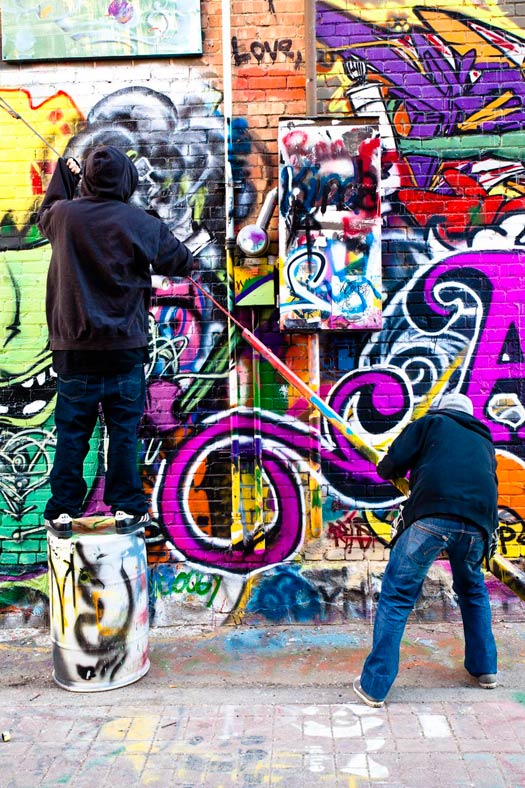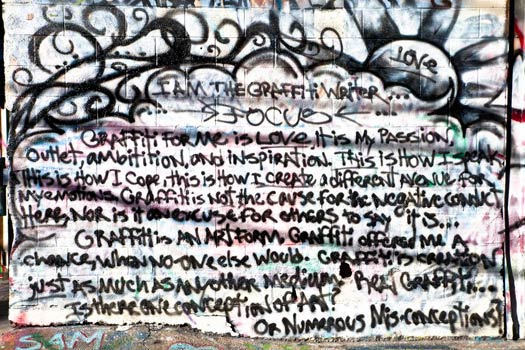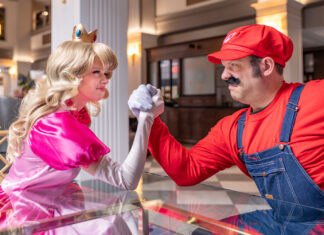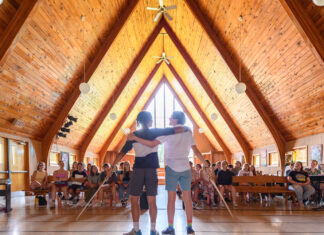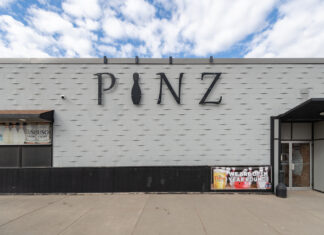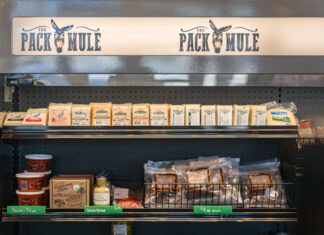Images by Bonny Fleming of Asio Studio.
If these walls could talk, they could soon lose their voice.
Art Alley could be gone with a simple whitewashing, covering years of graffiti art created by a plethora of artists in the Rapid City community.
This has all stemmed from lack of communication, though lack thereof has caused nothing but. Several months ago, a letter was presented to the Rapid City Council expressing concern and disappointment of what Art Alley “has become,” citing damage to vehicles and buildings, people climbing on rooftops, destructive elements of the art, and increased crime.
Vice president of the City Council Charity Doyle said, “We were approached at a council meeting by around 14 business owners that signed a letter that was basically asking for help.”
Help included a proposed task force, including recommendations on who should be on said task force.
This is something Doyle says the City Council wants to avoid.
“Dealing with task forces through the city before, I know that you don’t want them too small because then the viewpoints you need aren’t represented, but you don’t want them too large because nothing gets done,” she said. “Basically, you have a dividing line and you have one side against the other, and by the time any recommendations from the task force comes to council, most the time the council can’t adhere to them for legal reasons because what the task force wants doesn’t adhere to law.”
And this would be the case with Art Alley since it is in a historical district.
“You can’t paint on these buildings, it’s illegal by state law,” said Doyle. “Not only just that, but tagging (a stylized way of writing the alias of the artist) is illegal.”
That is exactly why Doyle wants to avoid any difficult decisions, since she can foresee the council having no choice but to terminate the infamous alley that runs from 6th to 7th Street .
“People think they’re creating a solution [with a task force], and you never know what’s going to happen once it gets into the council’s hands,” she said. “We really want to avoid that, because we think that the best solutions are going to come from the people who live there, who work there, who own property there, who own businesses there, and who put art up there.”
If it’s illegal, why are the walls of Art Alley plastered with paint? Back around 2004, Todd Rigione, an alley building resident, Dennis and Chelly Halterman, building and business owners of The Factory Salon, and Judi Looyenga caused a buzz by painting on the metal plates on light posts and their door.
According to Art Alley artist and enthusiast Tyler Read, a police officer approached them and the group explained they were covering gang graffiti. “[The officer] gave them the thumbs up, and from there it just spread,” he said.
Doyle said business owners enjoyed the art being put up when it began, which is why police gave it the okay. “The police department didn’t know what to do, because how could they judge what’s art and what’s not, and what the business owners want and what they don’t?” she said. “They couldn’t police the painting because business owners said they liked it. All they could do was police the other illegal activity.”
That is how the Rapid City Police Department hopes it will stay. “If people want to have an Art Alley, that’s fine with us,” said Captain Dan Rud. “We’ll let the property owners and artists decide what they want to do.”
Those light posts lit a flame under artists who were looking for an outlet for expression. “It was very organic,” said Read of its formation. “That has always been its nature.”
A “code of conduct” took shape, which Read admits was very different at the time.
“The people who were painting all knew each other and they knew the business and building owners… for the most part everyone was on board,” said Read. “Over the years, at this point where we’re at right now, it’s kind of changed, and some of the building and business owners are disappointed by it. Some of them feel like it is – justifiably – overwhelming for them to come and see that their building has been painted on and nobody ever talked to them.”
On Feb. 27, there was a panel discussion and presentation about the past, present and future of Art Alley at The Dahl Arts Center. Doyle said she was surprised how little talk there was between artists and owners.
To read the rest of this article, pick up the new issue of 605 today!


